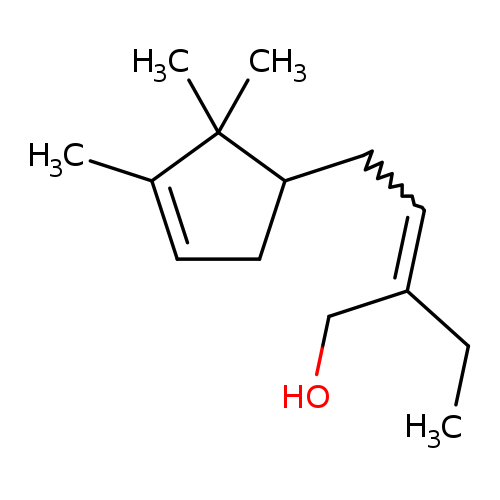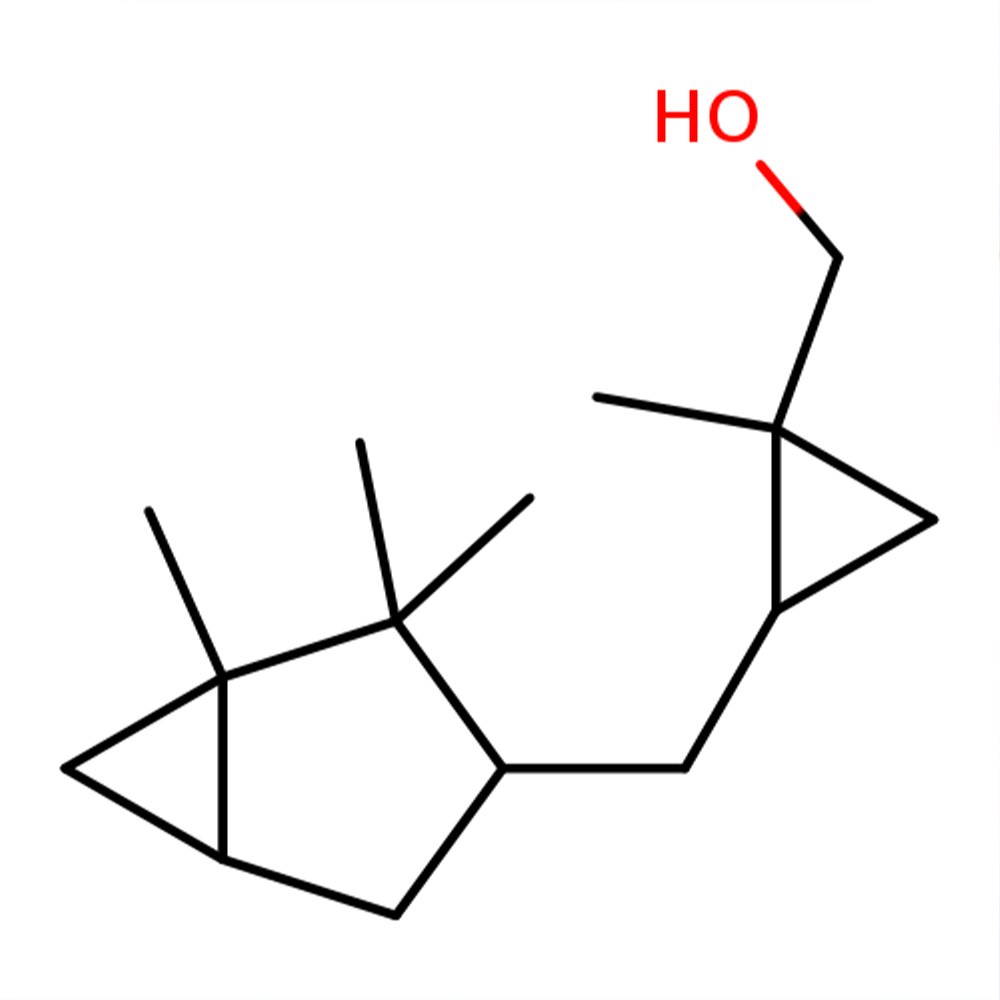 Image 1 of 3
Image 1 of 3

 Image 2 of 3
Image 2 of 3

 Image 3 of 3
Image 3 of 3




Brahmanol
Premium Synthetic Ingredient for Perfumery
Brahmanol™ (CAS 72089-08-8) is a tertiary sandalwood alcohol developed by Symrise to meet the need for stable, sustainable alternatives to Santalum album oil. This synthetic molecule offers a creamy, warm sandalwood scent with soft musk and slightly herbal undertones. With its high substantivity and excellent bloom, Brahmanol is widely used in modern perfumery to enrich woody, floral, and amber compositions. Thanks to its 69.2% renewable carbon content, it also aligns with green chemistry practices, making it a viable choice in eco-conscious formulation.
Premium Synthetic Ingredient for Perfumery
Brahmanol™ (CAS 72089-08-8) is a tertiary sandalwood alcohol developed by Symrise to meet the need for stable, sustainable alternatives to Santalum album oil. This synthetic molecule offers a creamy, warm sandalwood scent with soft musk and slightly herbal undertones. With its high substantivity and excellent bloom, Brahmanol is widely used in modern perfumery to enrich woody, floral, and amber compositions. Thanks to its 69.2% renewable carbon content, it also aligns with green chemistry practices, making it a viable choice in eco-conscious formulation.
Premium Synthetic Ingredient for Perfumery
Brahmanol™ (CAS 72089-08-8) is a tertiary sandalwood alcohol developed by Symrise to meet the need for stable, sustainable alternatives to Santalum album oil. This synthetic molecule offers a creamy, warm sandalwood scent with soft musk and slightly herbal undertones. With its high substantivity and excellent bloom, Brahmanol is widely used in modern perfumery to enrich woody, floral, and amber compositions. Thanks to its 69.2% renewable carbon content, it also aligns with green chemistry practices, making it a viable choice in eco-conscious formulation.
Synthetic Ingredient Overview
🔎 Chemical name — 2-Methyl-4-(2,2,3-trimethyl-3-cyclopentenyl)butan-1-ol
🏭 Manufacturer — Symrise
🧪 Synonyms — Brahmanol™, tertiary sandalwood alcohol
🧬 Chemical Formula — C₁₃H₂₄O
📂 CAS N° — 72089-08-8
⚖️ MW — 196.33 g/mol
📝 Odor type — Woody, Sandalwood
📈 Odor Strength — High
👃🏼 Odor Profile — Creamy, warm sandalwood; soft musky base, faint herbal and waxy nuances
⚗️ Uses — Sandalwood accords, modern woods, creamy florals, amber-musk structures; used up to 10% in fine fragrance concentrates
🧴 Appearance — Clear, colorless liquid
What is Brahmanol?
Brahmanol is a synthetic aliphatic tertiary alcohol, created to replicate and modernize the scent of natural sandalwood oil, which has faced sustainability and regulatory constraints. Introduced by Symrise, it belongs to a new generation of sustainable woody materials, integrating partial bio-based feedstocks into high-performance molecules. It features a substituted cyclopentyl backbone, which offers oxidative stability and long-lasting character in both alcohol- and oil-based systems. Its molecular structure enhances resistance to degradation and improves compatibility in cosmetics and functional fragrance products.
Olfactory Profile and Perfumery Applications
Brahmanol's scent is elegant and highly diffusive, offering:
Primary facets: Creamy, woody, true sandalwood character
Secondary facets: Slightly herbal, waxy, with a powdery-musky softness
Its performance includes:
Excellent substantivity on skin
Rounded diffusion in fine fragrance
Compatibility with musks, florals, lactones and ambers
Key Applications:
Sandalwood core in woody or ambery accords
Creamy floral structures (tuberose, jasmine, ylang)
Fougère or chypre reworks with a modern woody twist
Amber-musk bases as a soft structural connector
Typical usage is 0.5–10%, depending on composition weight and desired volume. It excels in creating smooth woody textures, without the aggressive sharpness of some synthetic sandalwood molecules.
Industrial and Technical Uses
Outside fine fragrance, Brahmanol performs well in:
Fabric softeners and soaps — stable under moderate surfactants
Alcoholic sprays — excellent bloom and tenacity
Candles and air care — heat stable, long diffusion
Its boiling point (~273°C) and log P value (4.73) suggest good performance across media, although acidic environments or aggressive surfactants may reduce its longevity.
Shelf life: 24 months in sealed, cool storage.
Regulatory and Safety Overview
IFRA Status — ✅ Not restricted (IFRA 51st Amendment)
EU Allergen List — ❌ Not present among the 26 declarable substances
REACH — Registered and compliant under European regulation
GHS Hazard Class —
H411: Toxic to aquatic life with long-lasting effects
Skin Sensitization — Not classified as a sensitizer
Recommended usage — Up to 10% in fragrance concentrate
Photoallergenicity & Mutagenicity — None reported at standard dosage
Always handle under GMP and SDS guidelines. Brahmanol is considered safe for dermal use within conventional perfumery concentrations.
Environmental & Sustainability Aspects
Renewable Carbon Content — 69.2% (Symrise, 2022)
Biodegradability — Readily biodegradable
Ecotoxicology — Toxic to aquatic life (long-term); use in compliance with effluent regulations
Sourcing — Part of Symrise's Green Chemistry initiative, aiming to reduce the footprint of high-impact fragrance materials
Use of Brahmanol supports conservation by reducing demand for endangered sandalwood species (Santalum albumand Santalum spicatum), making it a preferred modern alternative in ethical perfumery.
Sources
Symrise (2022). Brahmanol – Product Sheet & Regulatory Data
ECHA (2024). Substance Information for CAS 72089-08-8
IFRA (2023). Standards 51st Amendment
Surburg, H. & Panten, J. (2016). Common Fragrance and Flavor Materials
Scentspiracy Archives – Synthetic Woody Compounds



